Used correctly, structured markup data is a good decision to help websites display correct information on searches and increase the organic search visibility. But what happens if you use it incorrectly?
As we all know it, Google is not a fan of websites that don’t comply with quality guidelines and don’t offer the best user experience. So it may be that the structured data abuse to mark irrelevant content can potentially hurt your site. If you’ve been hit by a spammy structured markup penalty, you know what I’m talking about. If not, you’ll understand what you need to do in the following lines.
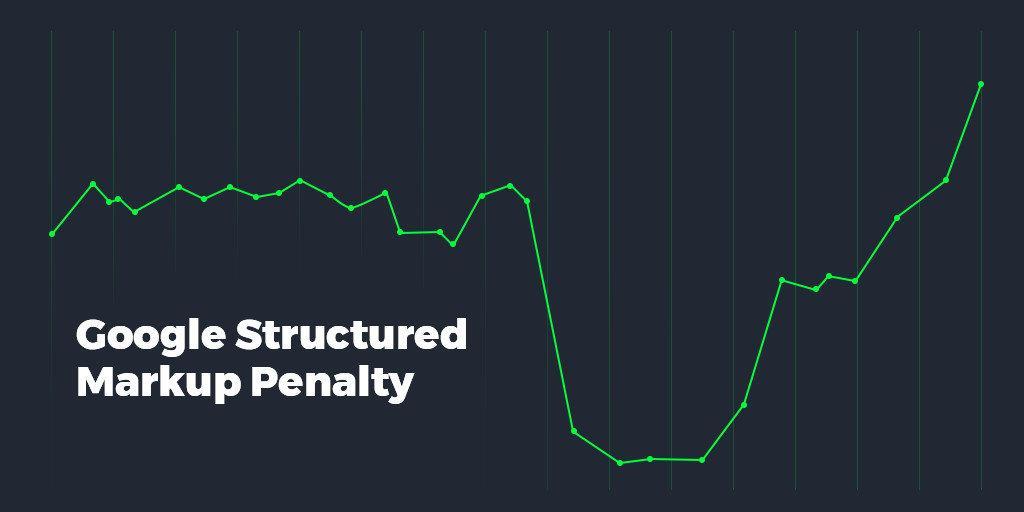
All your questions will be answered today. You’ll find out how a spammy structured data looks like, how to remove and avoid a penalty and if there are any repercussions.
It all started with a question on Google Webmaster Central office hours hangout. Plus, we’ve seen a lot of discussions many times before from people around the internet saying their structured data is removed from search engine results. You can find questions on Twitter, Reddit or social media in general, forums (including Google Webmaster Forum), blog post comments and so on.
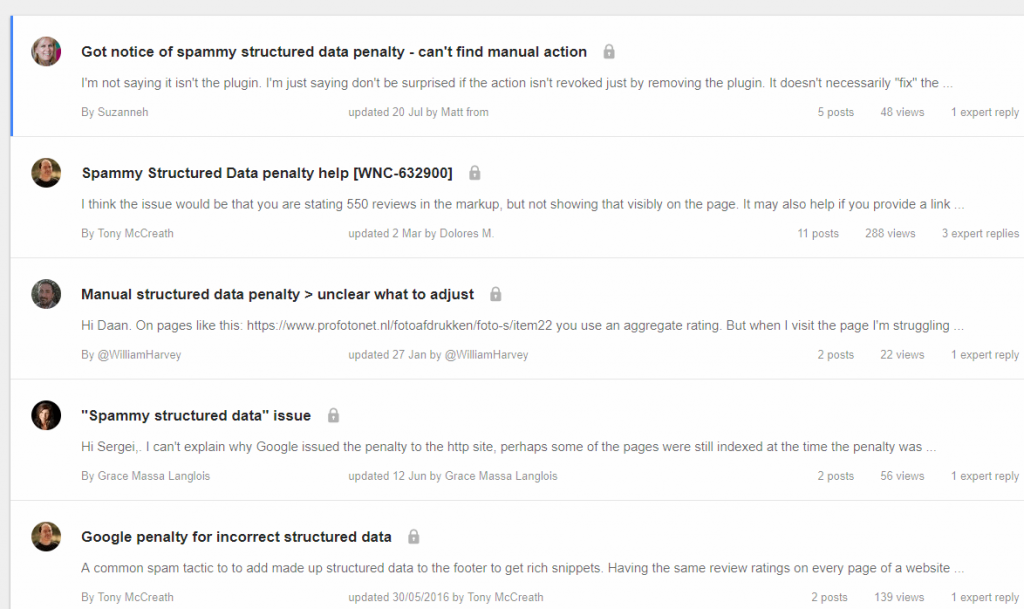
We decided to take the matter into our own hands and find out if there is such thing as spammy structured markup penalty, how to avoid it, and if it has any impact on rankings.
- How Does Structured Data Work?
- Does Spammy Structured Markup Penalty Really Exist?
- What to Do If You’re Hit by a Structured Data Penalty?
- How to Avoid a Spammy Structured Markup Penalty?
- Will Structured Markup Action Kill My Rankings?
1. How Does Structured Data Work
Structured markup data is used by a website to make Google understand better the content on a page. Furthermore, it can improve the appearance of a page on search. The main purpose of the structured markup data is to offer an organized search experience to the user. Google Search also uses structured data to show rich result display, as you can see in the following screenshot.
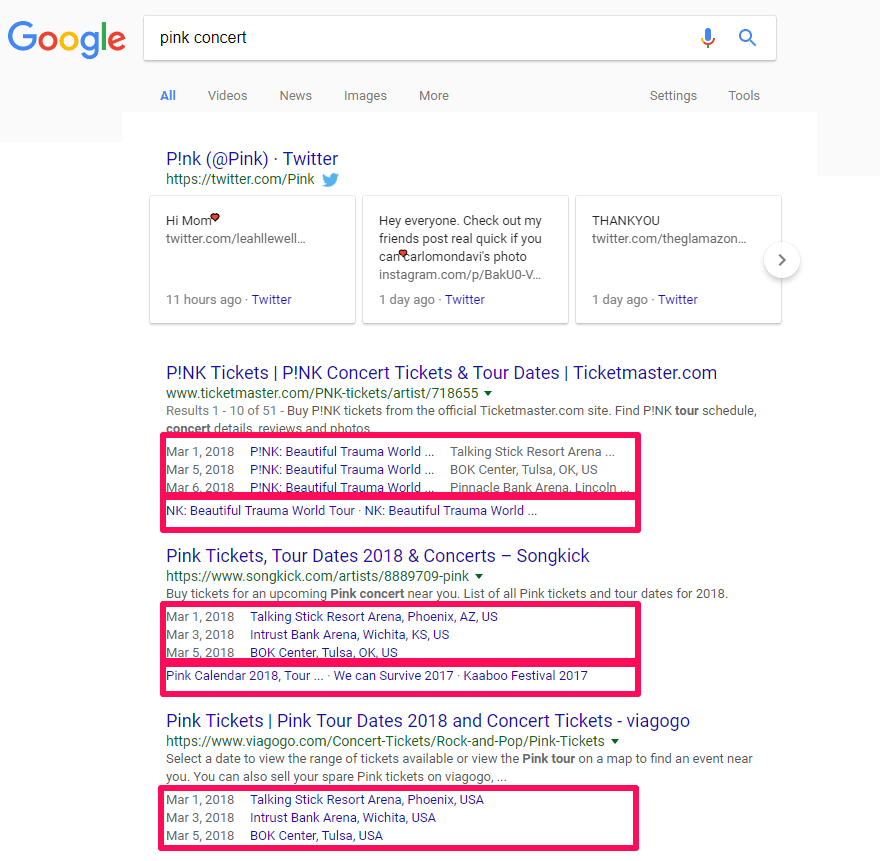
Nonetheless, on Google Developers there is an explanatory note, saying that:
Google does not guarantee that your structured data will show up in search results, even if your page is marked up correctly according to the Structured Data Testing Tool.
There is the situation where your rich snippets might not appear even if they are set up correctly. That happens because Google knows the users might not be interested in that information.
Nonetheless, every now and then there is someone who wants to exaggerate and take a lot of space in SERP with redundant information. And that’s why we probably have so many Google guidelines.
Basically, if you want to display rich snippets in Google, you need to observe the Structured Data Guidelines and your site needs to comply with the Webmaster Guidelines.
Google Developer is the place where you should find all the answers. There you have instructions, a list of all the featured snippets, errors, and guidelines. There are a lot of common causes of structured data manual actions. Let’s take into consideration the next examples of good practice and bad practice.
Spammy Structured Data Examples
Reviews are a widespread practice, maybe one of the most used rich snippets. If you search on Google for “best vacuums reviews” at some point will find this site:
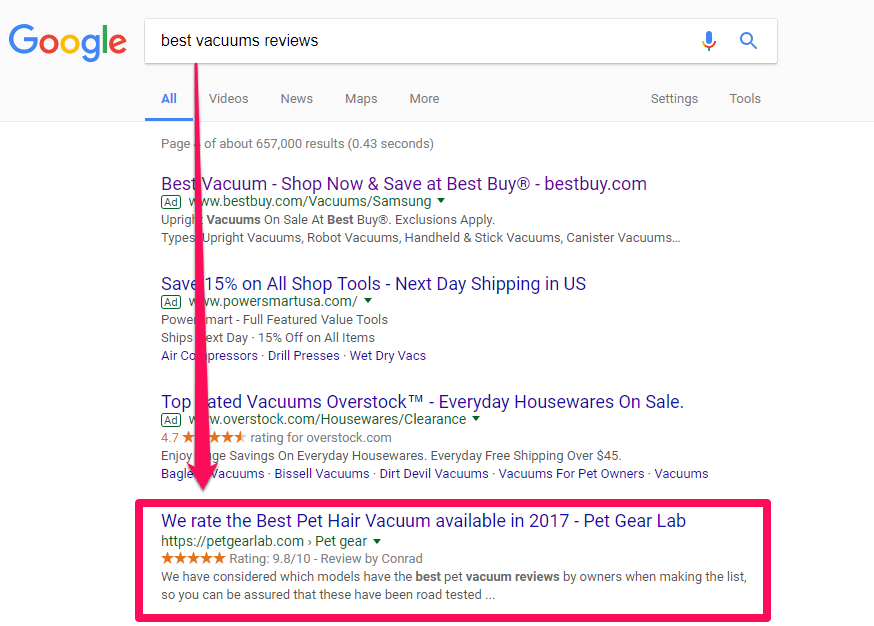
At first sight, it doesn’t send a spammy signal, but if you take a second look at the reviews and the title tag, you’ll find out that there might be more products on the page. After you enter the site, you’ll find a list of vacuums. Each of them has a different set of 5-star rating.
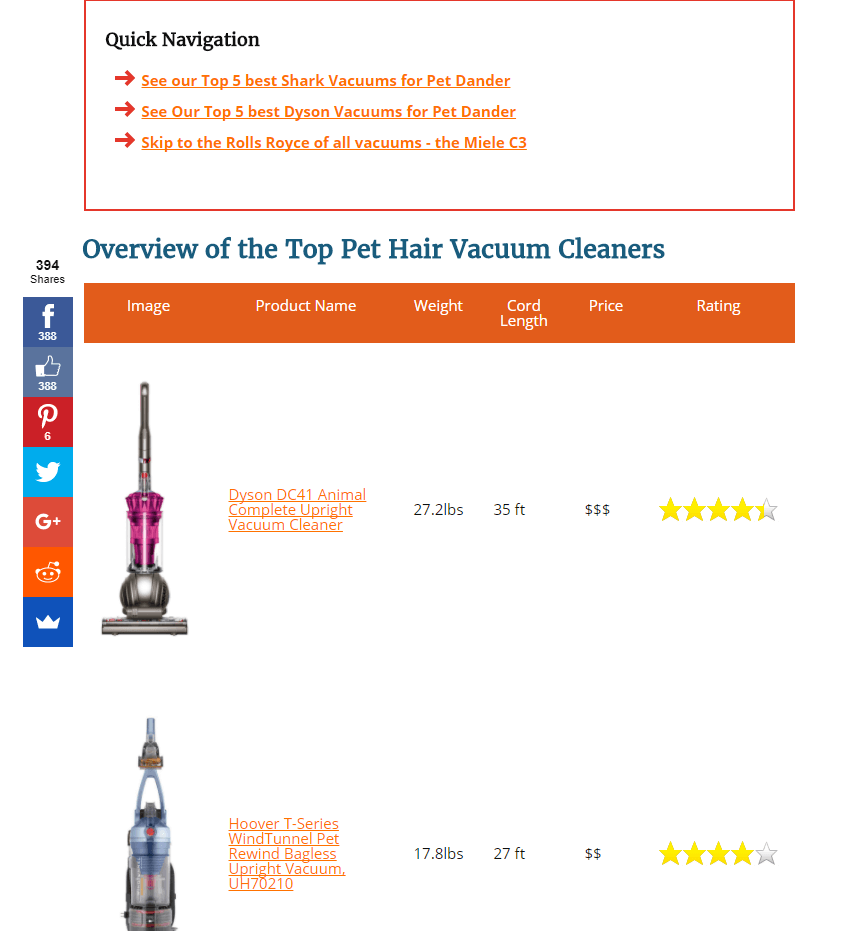
That’s not making any sense. How are those five stars from the SERP calculated? At the bottom of the page there is some sort of an explanation box:
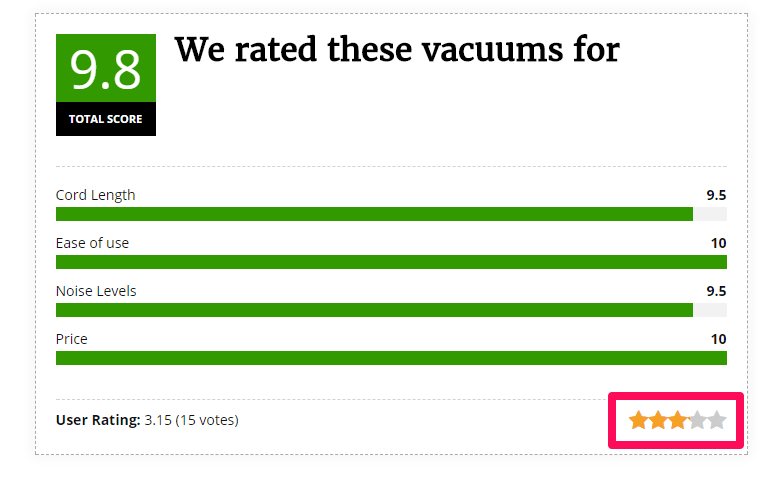
But in the end, what do the 5 star ratings in SERP exactly mean? Because the explanation box shows only 3/5 stars, not 5/5 as featured on Google. It abuses the rich snippets reviews, it is misleading, and it violates the Structured Data Guidelines.
The page mentioned above has a lot of bad snippets integration:
The first one is the fact that the site wrote those reviews (as you could see in the title – “We rated this vacuums”). Google explains very well that the reviews must come from customers or unpaid users and under no circumstances by the site.
Snippets must not be written or provided by the business or content provider unless they are genuine, independent, and unpaid editorial reviews.
Another one is the fact that the reviews need to be assigned for a single product/service, not for all of them. For example, “hotels in Madrid,” “summer dresses,” or “cake recipes” are not specific items. And of course “pet hair vacuums” is not very specific.
Provide review and/or rating information about a specific item, not about a category or a list of items.
Structured Data Testing Tool is the easiest way to view a result from your data and check if you set them right.
Groupon has some bad usage of markup data for a page with Amazon coupons. For example, if we use the testing tool, we can see that a link was marked instead of the name of the offer.

The guidelines assert very clearly that the name of the product has to be text, the name of the product itself, not the name of the company, the manufacturing, the description of URL.
Correct Structured Data Examples
After all these bad examples we deserve to see a good implementation of structured data markup as well.
Booking.com has good implementations for the accommodations. In the screenshot below, you can see that we’ve searched for a specific hotel, and it has 4 stars out of 5, the number of reviews and the price.
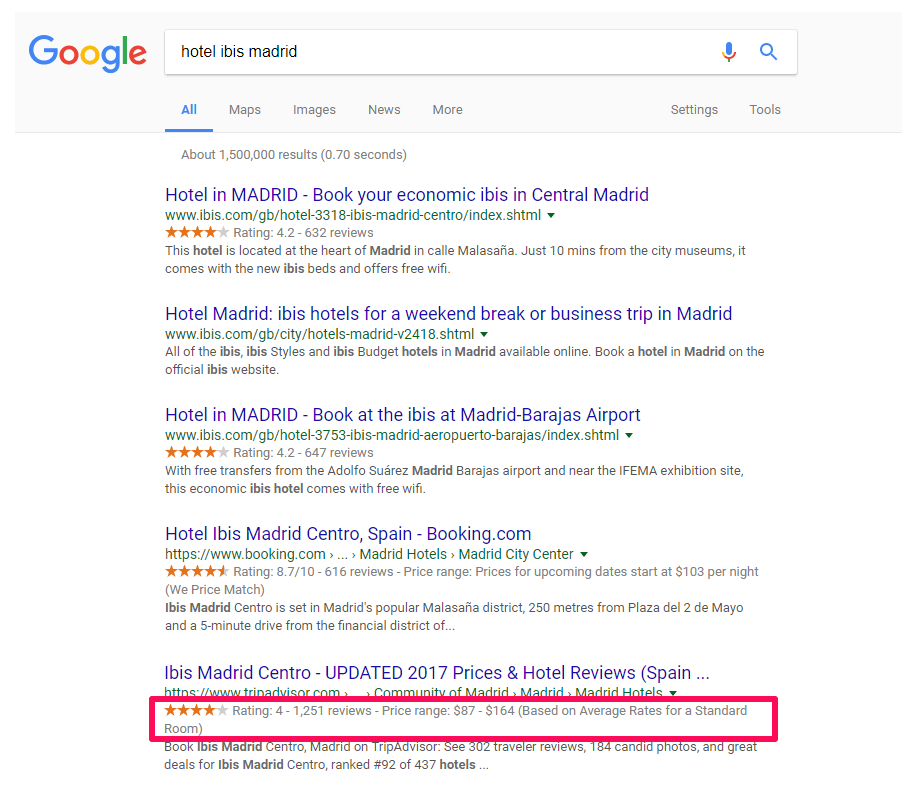
If we look on TripAdvisor, we will see the same number of stars and reviews. For the price, TripAdvisor gives an average value based on the aggregator websites mentioned as partners.

2. Does Spammy Structured Markup Penalty Really Exist?
According to Google, spammy structured markup penalty exists. On Webmasters Forum there are a lot of people that received a message in Search Console; Manual actions saying that the website’s schema code is spammy and it violates Google’s quality guidelines.
In the screenshot below you can see an example of such a message:
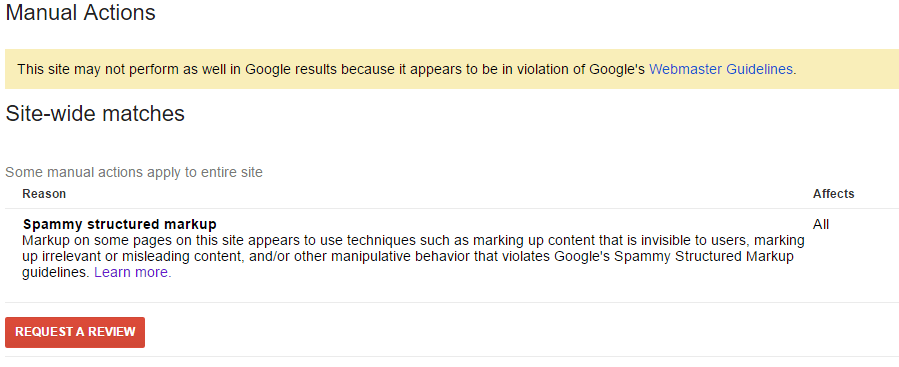
In June 2017, Jonh Mueller talked about spammy structured markup penalty. See below the message he received in the hangout:
Recently, we’ve been hit with a penalty for spammy structured data and we’d like some advice so we can adhere to the guidelines going forward. The guidelines are a little fuzzy in this area, as most of our pages are service categories.
The viewer also mentioned that he tried to fix the problem using Google‘s guidelines and searched for advice from experts and agencies to get the penalty removed and featured snippets on SERP once again.
Some other thing he did was to look at other sites that have implemented the structured markup successfully. It confused him even more because some of these other sites seemed to be further away from the guidelines than him.
John Mueller’s recommendation for all topics regarding structured data was to ask help from the experts on Google Webmaster Forum. There are a lot of them with more experience regarding the policy for structured data. If there is somebody to offer some good piece of advice, it would be them, for sure.
He adds:
| I wouldn’t look how other sites are implementing structured data. If you think they’re getting away with spammy structured markup, doesn’t mean you could do too. Rather think what you could do to comply with our policies. | |
| John Mueller | |
| Webmaster Trends Analyst at Google / @JohnMu | |
We searched for the user on Google Webmaster Forum after we identified his question in the hangout comments area on Google +. We saw his question on the forum and found what experts were suggesting.

The page he gave as an example with a spammy markup data is a list of multiple businesses (mechanics). As mentioned before, he violates the guidelines, and that’s probably why Google marked the review snippets as spammy.
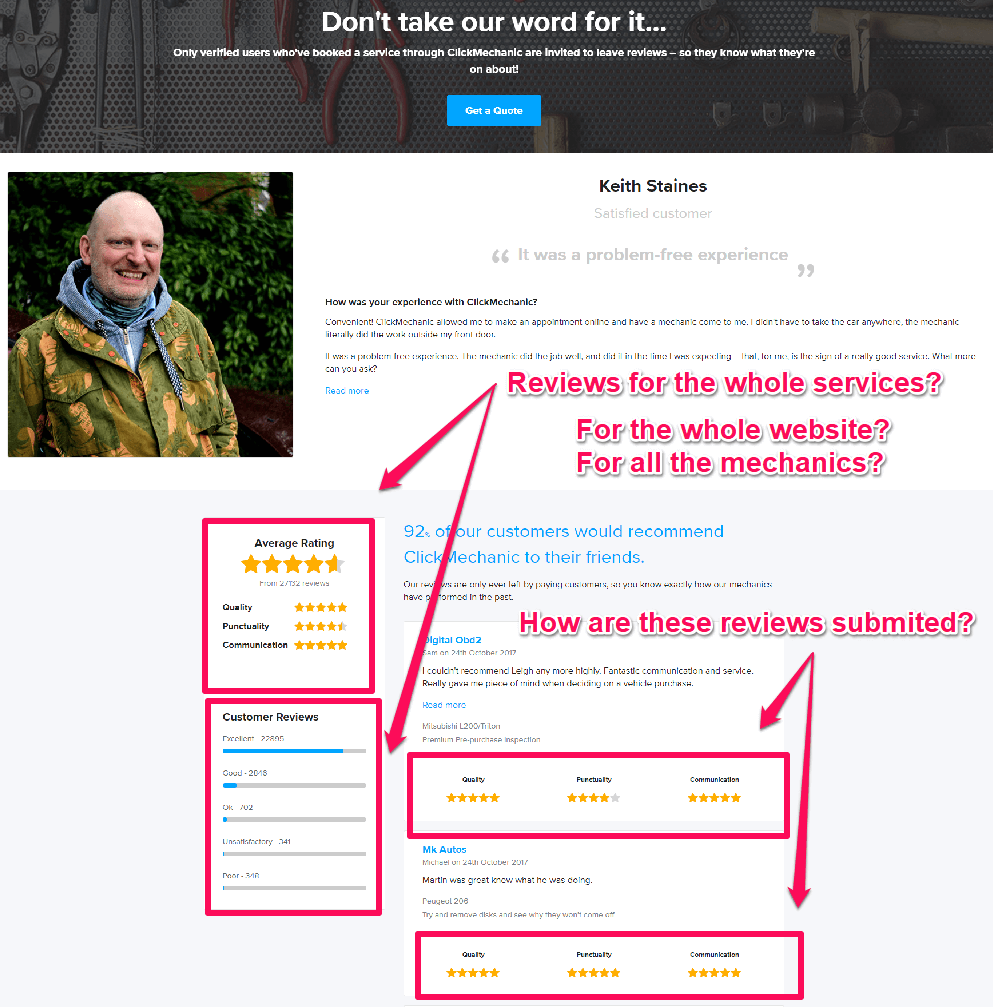
An expert on the forum even gives him an example of good integration:
Create reviews snippets for a specific service provided by the business (mechanic in this case). You could mark up Service type and then you could nest LocalBusiness (AutoRepair) via the provider property.
We’d recommend creating a dedicated page for each service and then mark up the reviews. It is very important to use product schema markup format with caution.
When using review markup, the main topic of the page needs to be about a specific product or service. You should absolutely not use review markup on a list of products/services, articles, a list of items, etc.
It might create a misleading or deceptive search experience to the user if the markup is not visible on the page. Here’s what Google says:
| Marking up content that is invisible to users, marking up irrelevant or misleading content, and/or other manipulative behavior that is outside Google’s structured data guidelines will bring you a Manual penalty. | |
| Google support | |
In case Google sees structured data doesn’t comply with the standard, then it reserves the right to take manual actions. As a result, Google has applied actions to the affected portions of your site, which may affect how your site is displayed in search results.
|
Actions that affect how your whole site is displayed are listed under Site-wide matches. Actions that affect how only part of your site is displayed are listed under Partial matches. |
|
| Google support | |
3. What to Do If You’re Hit by a Structured Data Penalty
An ideal solution would be to have no manual webspam actions found on your site.
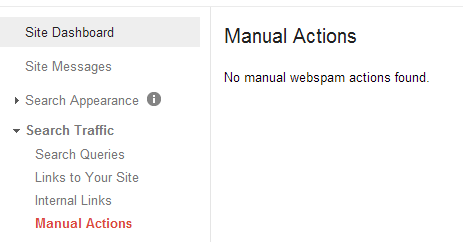
Yet, if you do have spammy markup data, you’ll most likely receive a manual penalty. In this case, there are some things you should know.
Firstly, look for a ray of light, keep your fingers crossed, knock on wood and carry real rabbits’ feet on your keychains.
Leaving the joke aside, the first thing you need to do is set up the markup on your site according to Google’s structured data guidelines.
After you check your markup to see if there are any errors or warnings, you need to fix them. Mostly the errors are about incorrect schema markup.
The process is relatively simple; it requires changing your markup data on the appropriate page, updating or deleting it if it’s not applicable. The final step is to submit a reconsideration request.
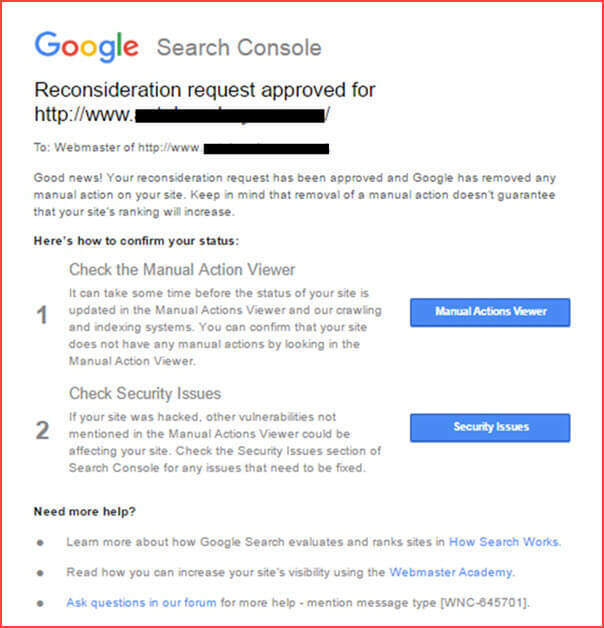
After that, you should wait for Google’s answer is. If you follow their recommendations, Google’s penalty should be removed.
It really depends on whether Google will show the rich content or not. Google doesn’t show all “rich cards” of all websites. It has to be relevant for the user and related to the search query.
Use a checklist to make sure you don’t forget any step for a well-structured data usage:
- Open the Manual Actions page in Google Search Console;
- Expand the Site-wide matches and Partial matches sections to see exactly where the problem is;
- Follow Google’s general quality guidelines and Google’s structured data guidelines;
- Check the most common causes of structured data manual actions to understand what you need to resolve;
- Fix the issue and republish the page;
- Submit a reconsideration request.
- Wait for results and follow the Manual Actions page for updates.
4. How to Avoid a Spammy Structured Markup Penalty
I know I’ve said it before but the easiest way to avoid a structured markup penalty would be to observe Google’s guidelines and stay off the spammy radar. But as we all know it this doesn’t happen all the time.
Another suggestion would be to test, test and once again test. Google Structured Data Testing Tool is the one and only help to determine the accuracy of your schema used on your site. Lastly, if you have a hint of a possible unnatural Schema markup send a message to Webmaster Central Help Forum and seek for guidance.
Some of the things you could do to avoid a spammy structured markup penalty are:
- Have relevant, engaging answer/result for user’s search queries;
- Use structured data for visible content only;
- Check and fix any warnings with Google’s testing tool;
- Use different markup for the pages within your website;
- Integrate mark up data for events only, not non-events (for example Last minute trip to Niagara Falls);
- Have reviews written by genuine customers or unpaid reviewers and not by the site or business.
5. Will Structured Markup Action Kill My Rankings?
Another hot topic regarding the spammy rich snippets is “ranking drops”. Is it for real? Does spammy structured markup kill Google rankings?
In the same hangout, I mentioned before, John Mueller said that, in most cases, the site’s ranking might not get affected by the loss of structured markup data.
His exact answer was:
| In practice, if the structure data team takes action on a site it will get affected only the rich snippets. So, the spammy structured data doesn’t affect the rankings of a site. The rest of your site is still normally shown in search. | |
| JOHn Mueller | |
| Webmaster Trends Analyst at Google / @JohnMu | |
John explained in another hangout that Google turns off the rich snippets until they can be trusted again. The penalty won’t downgrade the site’s traffic.
| Rich snippet themselves don’t give you ranking boosts. So it wouldn’t kind of make sense to demote a site in rankings if they are doing something wrong with rich snippets. | |
| JOHn Mueller | |
| Webmaster Trends Analyst at Google / @JohnMu | |
HOWEVER, the tricky part is that losing the rich snippet might lead to losing traffic as well.
A business owner said in the hangout that his site experienced 10% dip in search traffic because he lost the rich snippets.
Another example of a ranking loss after the manual action for spammy markup was discovered by two digital marketers, Daniel Rapoport Porat & Doron Wolffberg, and posted on YellowHead.
They said it all happened because of a wrong implementation of the markup data when they had no background about how to do it right. That’s how they got a manual penalty and left without the rich snippets. And they say that because of the penalty, the traffic suffered:

Source: yellowheadinc.com
After they resolved the issue and updated the code once with the help of users from Google’s forum, their traffic worked its way to the normal level, rising up from the dead. They had a beautiful penalty recovery.
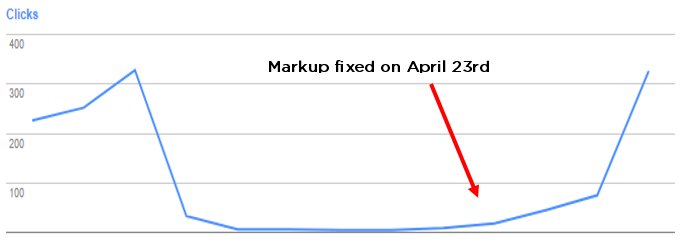
Source: yellowheadinc.com
Is it a smoke gun or it is for real? For sure we should listen to what Google says and trust the rankings of a site won’t drop because of spammy structured data. This doesn’t mean that someday Google won’t change the statement.
Conclusion
Following our guidelines will help you avoid Google’s dance and have relevant answers in SERP for users’ search queries. If by mistake or by any chance you wanted to fool Google without being caught, expect not less than having rich snippets removed from SERP. If implemented correctly, Google’s rich snippets can improve the user experience on site, giving additional information, it can lower the bounce rate and sometimes improve conversion rates.
The road to correctly used markup data is easy, but you have to do your work first. Read Google’s documentation, seek for guidance on the forum, if you have troubles implementing the schema.org. Follow Google’s guidelines and mark up the content correctly. Then wait for Google to read it and decide whether it will go live or not.

 Site Explorer
Site Explorer Keyword tool
Keyword tool Google Algorithm Changes
Google Algorithm Changes

I learn a lot about the structured markup penalty with your article. I found it very interesting. Great job! Thank you.
Hi Oscar,
Thank you for the feedback. Glad to hear that! Good luck.
Hi Andreea, great writeup and thanks for sharing. Found the information very useful.
Thank you for the appreciation, Steven.
Hi Andreea,
A very good step-by-step guide especially for a beginner like me. It’s overwhelming with information, thank you for making it easy to understand and very detailed.. I’ll pop some questions here, if I need help, hope that’s okay.
Hi Dharshini,
Thank you! I’ll be expecting your questions. Good luck!
Awesome explanation; thanks! it will surely help people why understand why correctly structured markup is useful.
Keep up the good work!
Great aspects shared, really it is very useful information.
Thank you for this. This is the best article I have read so far on the markup data. We have tried everything to have a manual structured data penalty removed and it sounds like the webmaster forums are the best bet on getting to the bottom of this issue. This is the first time I have seen someone answer if this effects your websites ranking, which is sounds like it only does fractionally.
Hi Mike,
Glad to hear that. Let me know if you have any questions so we can debate them in one of our future articles.
Good luck!
Thanks for sharing such an informative article it will really help all the beginners.
Schema Markup, also known as structured data.
Structured markup data is used by a website to make Google understand better the content on a page.
Hello, I am using multiple snippet for same page. Example: main page has article, organization, person, site links, Q&A snippets. Also every page has these snippets except Q&A. Is this using hurts my web site do you think?
Google has released a new Schema update and it coincided with me applying review schemas using a premium plugin. I lost nearly all the traffic because of that.
Hi,
Do you know if this is possible to get hit by a penalty due to spammy markup even if I didn’t receive any email in my Search Console ?
Hi Franck,
Yes, it is possible. For example, I’ve heard of situations when websites received a manual penalty for “Spammy Structured Markup”. You can check Google Search Console for more info on those who were affected.